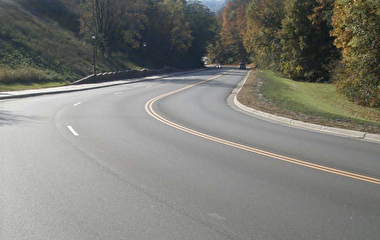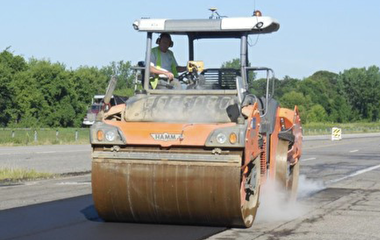
A rough road is cause for concern, so rating the quality of pavement on state roadways is a common practice for state transportation departments. For example, the Minnesota Department of Transportation (MnDOT) uses an inspection vehicle to measure up-and-down movement while driving on a roadway, rates each section of pavement with a ride-quality index, and uses that information to determine the remaining service life of the pavement segments. However, the agency has found that a small number of pavement sections in most districts have been in poor-quality condition for longer than five years.
“MnDOT depends upon the accuracy of ride quality index data to schedule timely pavement maintenance and budget funds effectively,” says Mihai Marasteanu, a professor with the U’s Department of Civil, Environmental, and Geo- Engineering. “They wanted us to determine the actual condition of pavement segments rated as poor for longer than five years and see if the road-quality values were accurately conveying these roadways’ true conditions.”
To do so, researchers investigated pavement sections that had been rated in poor condition for longer than five years, then interviewed MnDOT district engineers about those segments. They determined that most pavement segments with poor ratings had unique characteristics such as curbs and gutters, manholes, sewer grates, dramatic shifts in grade at intersection crossings, bridge transitions, or railroad crossings that significantly affected how these segments were rated and repaired.
“We discovered that most pavement sections rated in poor condition for extended periods represent anomalies, not poor structural condition,” says Thomas Calhoon, a graduate student who worked on the project. “Based on our findings, additional characteristics will have to be added to MnDOT’s Highway Performance Management Application to assess segments’ true condition.” (Calhoon now works for MnDOT’s Office of Materials and Road Research.)
To implement the findings, MnDOT plans to include additional information to convey the anomality of certain pavement sections; this could be done by classifying them differently or using additional rating parameters. As a result, the pavement segments’ true conditions will be more accurately conveyed within MnDOT’s system.
“Through this research, MnDOT will be able to more accurately measure the condition and performance of our pavement system,” says Shannon McGrath, MnDOT’s asset management planning director. “The pavement investment evaluator will remove anomalous segments in the project selection process, allowing us to make better decisions.”
Writer: Megan Tsai


